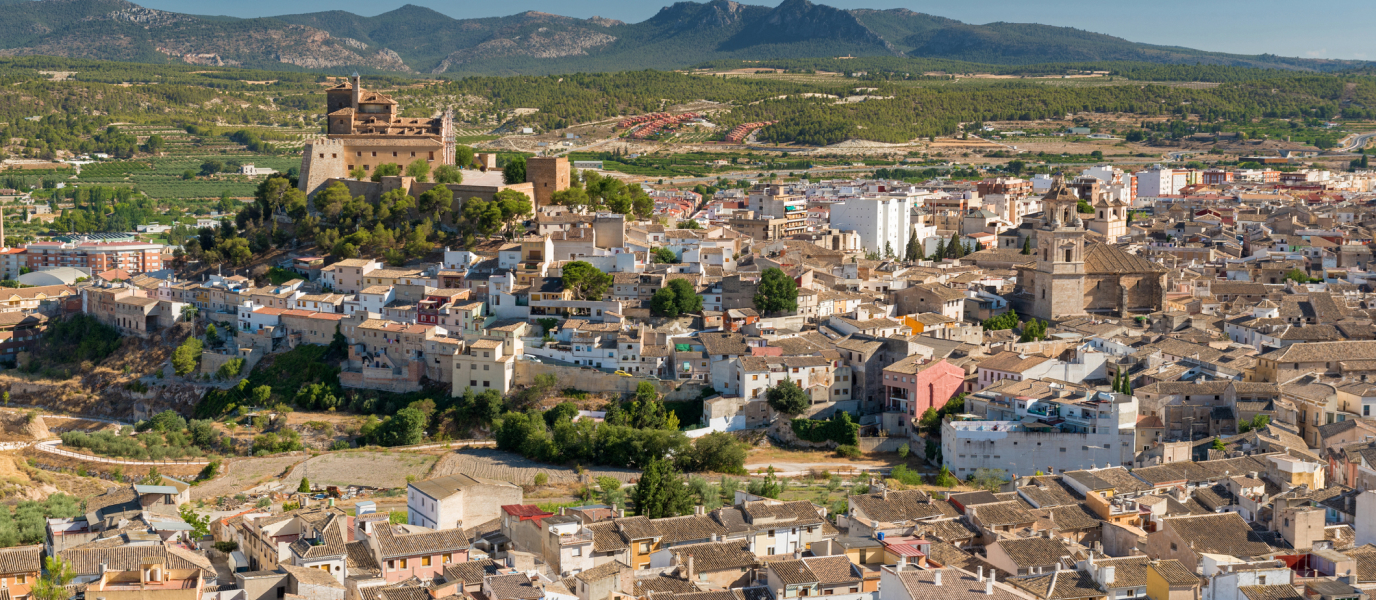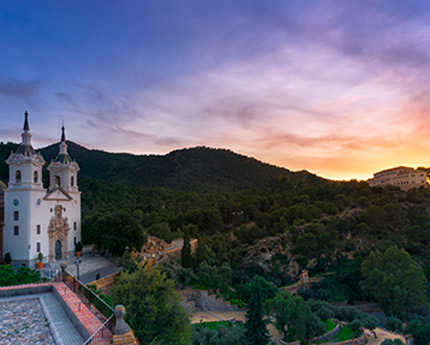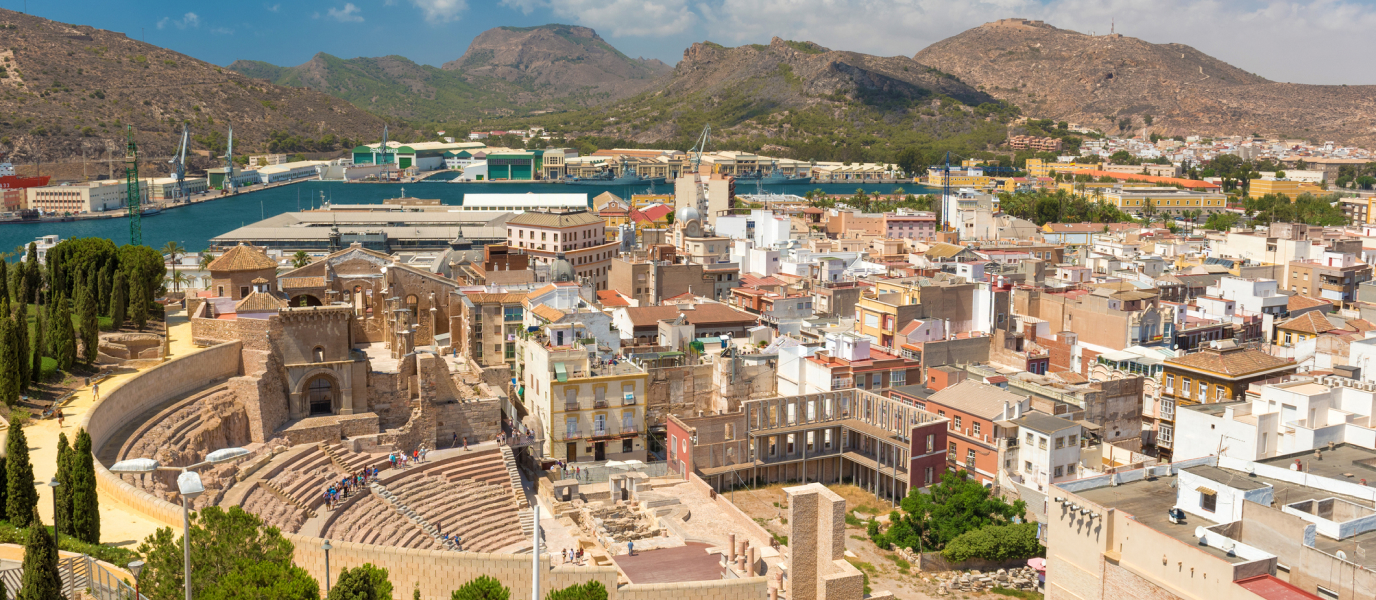Welcome to Murcia! We present our list of essential attractions in the city of Murcia, a fantastic place for a two- or three-day stay on this part of Spain’s Mediterranean coast.
Perhaps less well-known than other cities in this part of the world, Murcia has a well-preserved and lively historic centre with important and fascinating buildings. With almost half a million inhabitants, Murcia is now the seventh most populous city in Spain.
Read on and find out what to visit in Murcia, so that you don’t miss a thing on your next visit.
What to see in Murcia
For this article, we tour the most important historic monuments and iconic spots to be found in Murcia, so that you don’t miss a thing on your next visit to this city in the south east of Spain.
Murcia’s Cathedral
The Cathedral is Murcia’s main historic monument, an outstanding edifice combining Gothic, Renaissance and Baroque styles. Its construction spanned the fifteenth century, and its outstanding features include its bell tower (at 93 metres the second tallest in Spain) and its breathtaking, Baroque-style main façade. Inside, the main attractions are the Vélez chapel and the tomb of Alfonso X The Wise. This explains why Murcia Cathedral has been a National Monument since 1931.
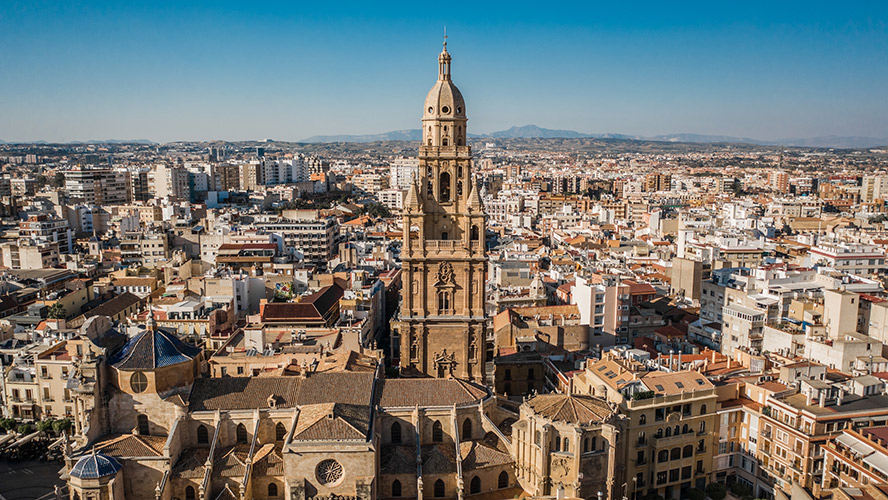
Murcia Casino
(Casino Real) is one of the city of Murcia’s most famous and noteworthy public buildings. Inside and outside, its architecture is incomparably beautiful, thanks to its eclectic style which blends details ranging from the neo-Baroque of its elegant ballroom, to the neo-Nazari design of its remarkable Arab Courtyard, which required 20,000 sheets of gold leaf. The library, with its striking upper floor made from wood, also attests to the importance of this institution, founded in 1847 as the hub of Murcia’s social and cultural life.
Romea Theatre
Another of Murcia’s major cultural attractions is the Romea Theatre. Opened in 1862, its distinguishing feature is its neo-Classical façade with Modernist touches. Even more impressive is the stunning auditorium with its three levels of boxes and the exquisite paintings adorning the ceiling. This is one of Spain’s most prestigious theatres, with a seating capacity of over 1,100.
Convento de Santa Clara
is a multicultural symbol planted by history in southern Spain. Its origins are a twelfth-century Moorish palace, later a Castilian fortress, and a monastery dating from the fourteenth century. The cloister has the ambience of an Andalusí garden, with one of Spain’s oldest Moorish garden pools. The Santa Clara Museum houses a host of artifacts, as well as an excellent collection of religious art.
Plaza de las Flores
If there’s one crowded, buzzing space in the centre of Murcia, it is the Plaza de las Flores [Square of Flowers]. Always busy and vibrant, this is one of the best-known places to go for tapas, although the square’s most striking feature are its flower stalls
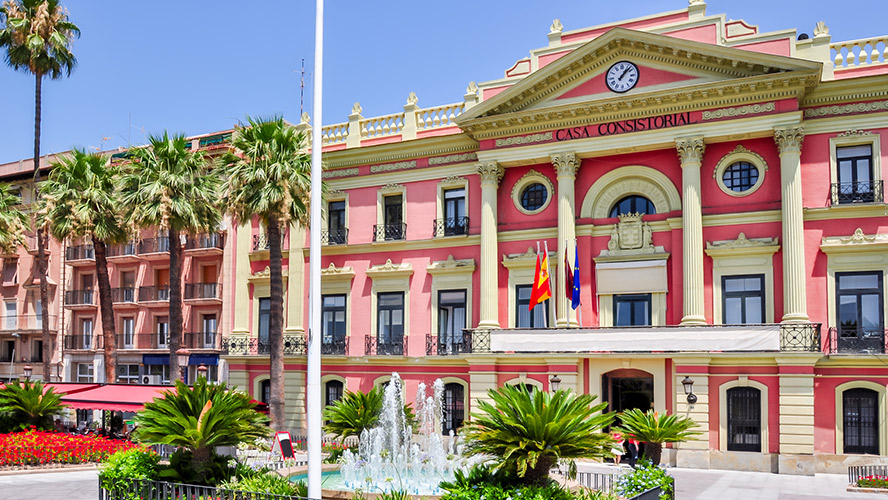
Puente Viejo and Puente Nuevo
Of the many bridges crossing the river Segura as it flows through Murcia, two are especially remarkable: Puente Viejo [Old Bridge], also known as Puente de los Peligros [Bridge of Perils], and the Puente Nuevo [New Bridge], or Puente de Hierro [Iron Bridge]. Puente Viejo dates from 1742, and is the city’s oldest bridge; it is built from stone, and features a shrine to the Virgen de los Peligros on the southern side. The Puente Nuevo or Puente de Hierro was the city’s second bridge, built between 1894 and 1903. It is noteworthy for its iron structure, reminiscent of that of a railway bridge.
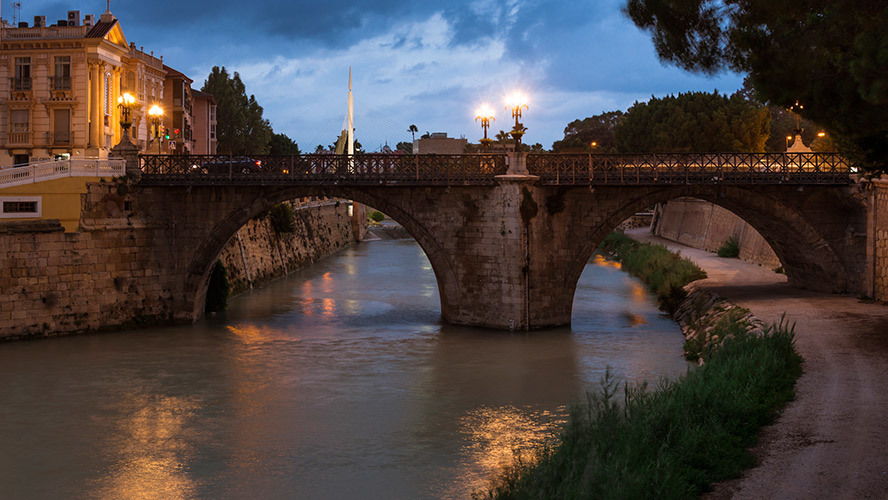
Mercado de las Verónicas
Mercado de las Verónicas is Murcia’s principal provisions market. It is housed in an elegant, Modernist edifice built of brick and white stone between 1914 and 1922. Inside, over 100 stalls await laden with the finest produce. Next to the market, visitors can see a section of the old Moorish city walls, with the only tower that has survived to the present day.
Monasterio de Fuensanta
On the outskirts of Murcia, in the foothills of the Cordillera Sur, stands the Santuario de la Fuensanta, designated a National Monument, and a popular place of pilgrimage for Murcia’s inhabitants. Apart from the sanctuary’s religious significance, the place affords one of the best views over the city of Murcia and the surrounding countryside.
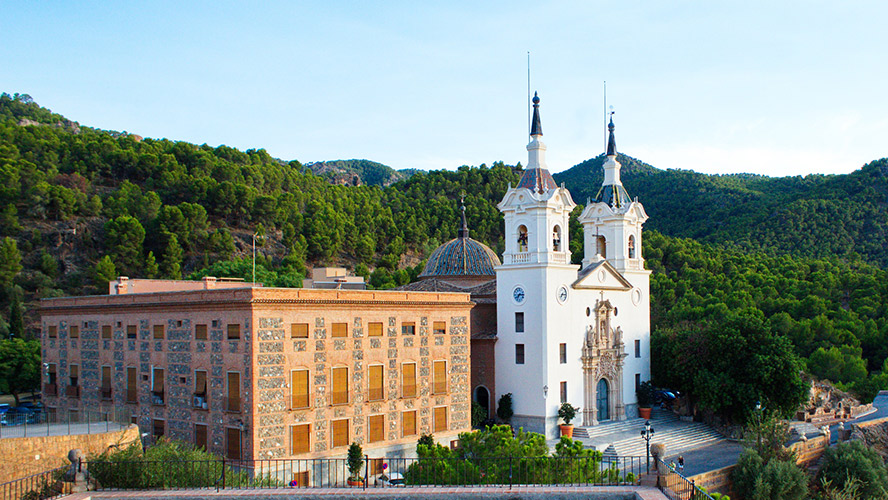
Museums in Murcia
Along with the buildings and other main points of interest, the city also has a series of museums which we can recommend visiting.
Salzillo Museum
The Murcian sculptor Francisco Salzillo’s legacy can be found here, in the Salzillo Museum. This cultural centre is dedicated to the Baroque sculptor, and includes the church of Nuestro Padre Jesús and its annexe. Salzillo is one of the finest masters of eighteenth-century Spanish sculpture, strongly orientated towards religious sculpture.
Archaeological Museum:
Murcia’s Archaeological Museum (the Museo Arqueológico de Murcia, or MAM) houses a comprehensive exhibition of the region’s archaeology, covering pre-history, the Bronze Age, the Iberian cultures and the Roman period. This is a fascinating museum, where visitors can learn more about the main archaeological sites and discoveries across the region of Murcia.
Museo de la Catedral
A tour of Murcia Cathedral can be rounded off with a visit to its museum, which gives us a glimpse of the hidden parts of the cathedral, several historic pieces, and a magnificent collection of religious art. A glass floor provides a view of the remains of the great mosque that stood on this site centuries before. Visitors to the museum can also go up the cathedral tower.
Fine Art Museum
Murcia’s Fine Art Museum (Museo de Bellas Artes de Murcia, or MUBAM) is another of the provincial capital’s major cultural centres. Founded in 1864, its two buildings bring together collections of paintings ranging from the Renaissance to the Romantic period, with works by regional, Spanish artists including Zurbarán, Ribera, Murillo and Romero de Torres — and even some Italian artists.
Where to eat in Murcia
Murcia’s pleasant climate means that the most popular ways to eat out, wherever you might be in the city, are going for tapas or to a terrace bar or restaurant.
However, the area around the cathedral is one of the best spots, with lots of bars and small restaurants such as the Monumental, the Hispano, Keki, and Los Zagales. Murcia’s Casino also contains an interesting restaurant.
The Plaza de las Flores and its neighbouring streets are among the main areas people go to eat. This area is always buzzing, with a great atmosphere, and you will find bars such as Parlamento Andaluz, El Pulpito, Fénix and La Tapeoteca here.
In the area around the Plaza de Santo Domingo, you will also find bars and restaurants popular with the locals, including Morales, Alborada and the Gran Vía.
Where to stay in Murcia
There is a great choice of accommodation in Murcia, but one establishment that combines good location, quality and value for money is the Occidental Murcia Siete Coronas hotel, one of the city’s most modern hotels.
This four-star hotel is located in the Paseo de Garay, close to the river Segura, and just over five minutes’ walk from star attractions such as the cathedral.


























































